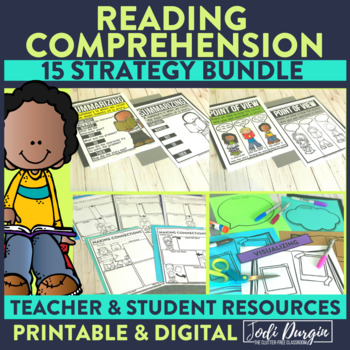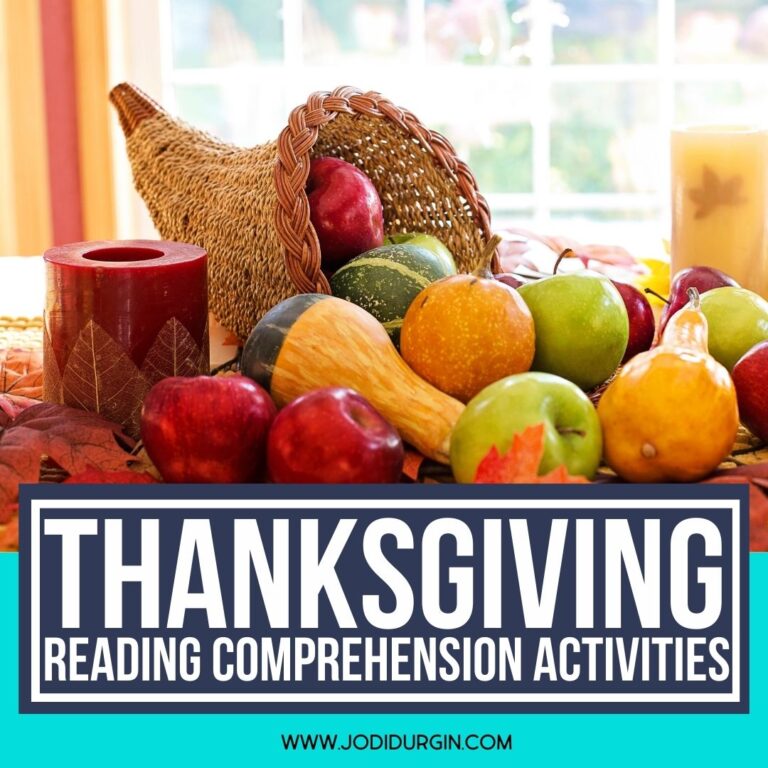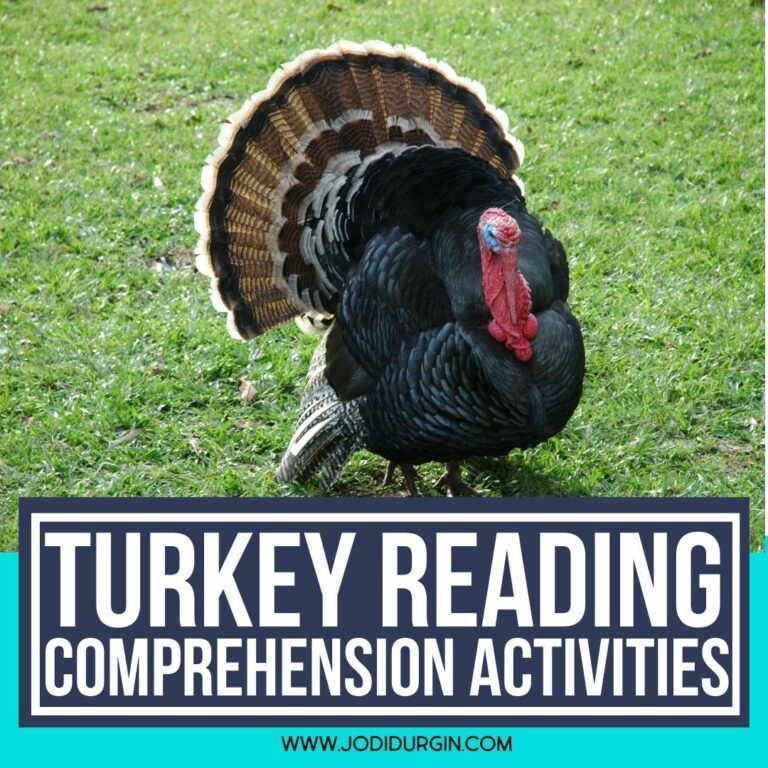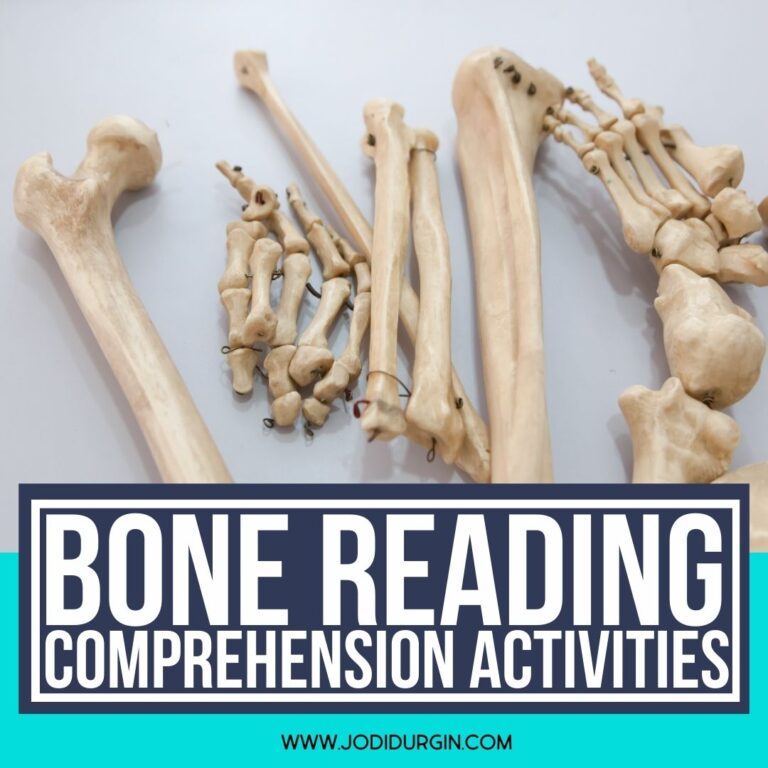Compare and contrast is an important reading comprehension strategy for elementary students to become proficient in. When readers compare and contrast elements of a story, they think about how two or more things are alike and different. This process helps readers better understand and enjoy stories they read and listen to. Learn all about how to teach compare and contrast below!
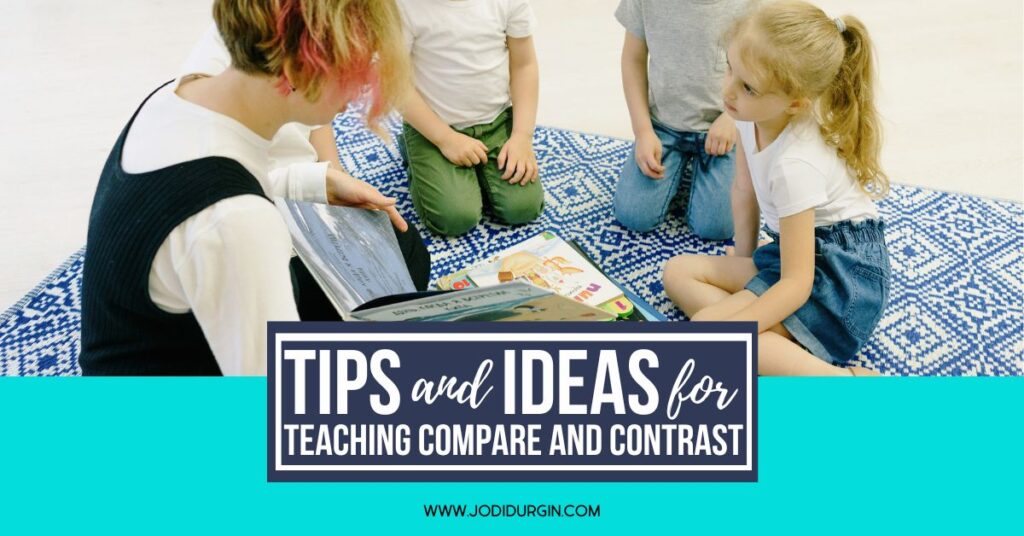
What is Compare and Contrast?
The ability to compare and contrast is not only a reading strategy, but a skill we use in our daily lives. When we compare and contrast we are thinking about how two or more things are alike and different, which in turn helps with our everyday decision making. For example, when you are trying to decide on a vacation destination, you are comparing the different destinations and what sets them apart from each another. Students use this strategy to compare and contrast characters, word choice when they are writing, equations in math, different ideas in science, and even as they learn about different cultures.
Comparing and contrasting shows up in a number of Common Core Standards for most grade levels. In regard to reading, we use this skill to understand new ideas in a text. When we compare, we are considering how things are alike and different. When we contrast, we focus on only the differences between two things. This strategy is one of the first higher-order reading skills that our students are introduced to. Students can compare and contrast within a single story, or compare and contrast different texts. There are many applications to this strategy when it comes to reading.
Why Is Comparing and Contrasting an Important Comprehension Strategy?
The ability to compare and contrast is important across all subject areas. This strategy is an important building block towards students developing high-order thinking skills because it is typically the first way we introduce this type of thinking to students. Compare and contrast activities engage even our youngest students in critical thinking which in turn deepens their comprehension of a text.
In regard to reading, there are many benefits to using this strategy. First, it helps students to pay close attention to the details in a story. When they do this, their comprehension is strengthened. Second, this strategy requires students to have attention to details within the text which then helps them to retain the information they read. Finally, using the strategy teaches students to organize information as they read and write. This will help them to think clearly and express their ideas more effectively.
Teaching Standards for Compare and Contrast
Standards for this reading comprehension topic include…
CCSS
- RL.1.9: Compare and contrast the adventures and experiences of characters in stories.
- RL.2.9: Compare and contrast two or more versions of the same story (e.g., Cinderella stories) by different authors or from different cultures.
- RL.3.9: Compare and contrast the themes, settings, and plots of stories written by the same author about the same or similar characters (e.g., in books from a series).
- RL.4.9: Compare and contrast the treatment of similar themes and topics (e.g., opposition of good and evil) and patterns of events (e.g., the quest) in stories, myths, and traditional literature from different cultures.
- RL.5.9: Compare and contrast stories in the same genre (e.g., mysteries and adventure stories) on their approaches to similar themes and topics.
TEKS
- LA.1.9.D.iii: recognize characteristics and structures of informational text, including: organizational patterns such as chronological order and description with adult assistance;
- LA.2.9.D.iii: recognize characteristics and structures of informational text, including: organizational patterns such as chronological order and cause and effect stated explicitly;
- LA.3.9.D.iii: recognize characteristics and structures of informational text, including: organizational patterns such as cause and effect and problem and solution;
- LA.4.9.D.iii: recognize characteristics and structures of informational text, including: organizational patterns such as compare and contrast;
- LA.5.9.D.iii: recognize characteristics and structures of informational text, including: organizational patterns such as logical order and order of importance;
3 Tips for Teaching Students to Compare and Contrast
Below are suggestions for when you’re teaching your students to compare and contrast when reading.
1. Read Aloud Picture Books
Reading aloud picture books is a great way to model and practice this reading comprehension strategy. There are tons of great read alouds out there for teaching students to compare and contrast when reading. Some high-quality examples include Diary of a Worm, The Rabbit Listened, Memoirs of a Goldfish, Memoirs of a Parrot, and Nerdy Birdy.
2. Make Anchor Charts
Anchor charts are another great way to teach students about comparing and contrasting while reading. My compare and contrast resource includes an interactive anchor chart that successfully engages students in their learning and provides a visual learning experience for students to learn about comparing and contrasting.
3. Use Videos
The third on the list of tips for teaching students to compare and contrast is playing videos. This is another great visual learning opportunity for students to learn about what can feel like a very abstract idea. Below are some examples of videos that are great for teaching students how to compare and contrast while reading picture books.
- https://jr.brainpop.com/readingandwriting/comprehension/compareandcontrast/
- https://www.youtube.com/watch?v=HeDVQbSpHac
Compare and Contrast Resources
These printable and digital resources for teaching elementary students about comparing and contrasting make curriculum and lesson planning quick and easy. It includes teacher, parent, and student resources, so you’ll have everything you need to deliver meaningful research-based instruction rooted in current best practices.
What is Included
1. Teacher Resources
There are teacher notes about the strategy, teaching ideas, a planning page with question prompts, and list of mentor texts, so you have all of the information you need to plan a research and standards-based reading unit based on this reading comprehension strategy.
2. Parent Resources
There is a parent letter and a reading log with suggested question prompts so parents can confidently support and reinforce the strategy you are teaching with their children at home.
3. Instructional Resources
There are printables to create a large anchor chart and reference charts. Both save you lots of time searching for anchor chart ideas and supplemental teaching tools.
4. Student Resources
There are 3 printables and 2 activities for students that provide meaningful opportunities to practice and make sense of the reading strategy in a fun and engaging way.
5. Digital Resources
There are digital versions of several of the resources so students can access them in school or at home using a technology device of their choice.
Why Teachers Love this Resource
- This collection of resources is versatile in that it can be used on it’s own or can be used to supplement any reading curriculum, so you will be able to continue to use these resources if your school adopts a new reading program or you switch school districts.
- This resource is part of a larger collection of reading strategy products, so you can provide a consistent instructional approach that your students quickly learn and understand the expectations and routines for. Learn more about this collection here!
- It’s a huge time saver! Instead of hunting for background information on a reading strategy and then searching for resources to teach the strategy, this comprehensive resource includes all of the information and resources you need to teach a whole unit on this reading strategy.
- The student activities are a lot of fun for students, which helps create a productive learning environment where students are engaged and learning!
- It includes resources that provide a great way to create a home-school connection with students’ families and support parents/guardians in continuing student learning at home.
In closing, we hope you found this post about how to teach compare and contrast helpful! If you did, then you may also be interested in this other post about elementary reading comprehension strategies.


